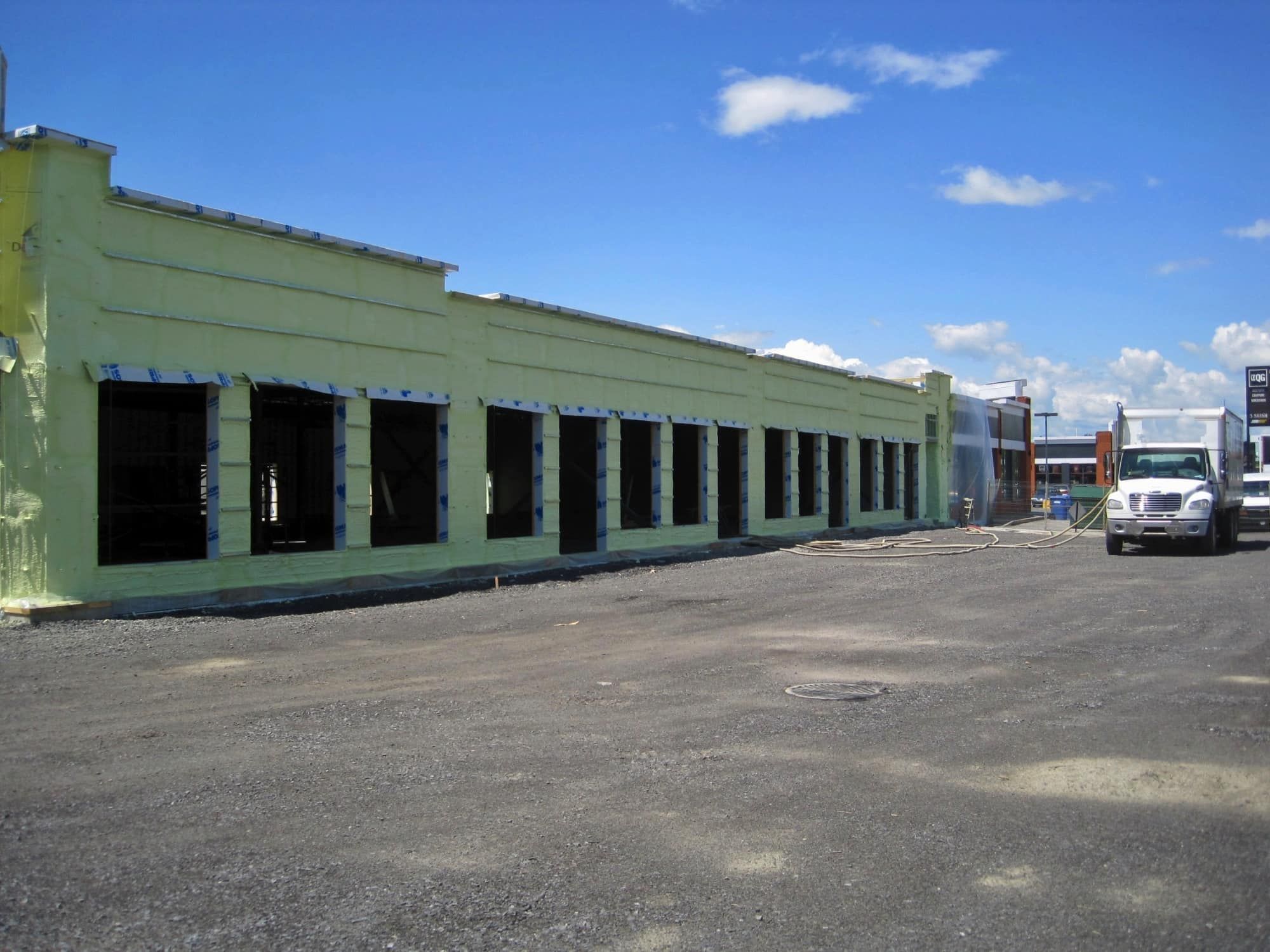Spray Foam Insulation
Although spray foam insulation has been in used since the 1940s, for the past 30 years, primarily for aircraft. Fast advances in technology and product innovation has seen the increased adoption of spray foam insulation in commercial and residential construction. The rapid growth of sprayed foam insulation in building construction, thanks in part to its immediate and long-term benefits, has allowed the insulation material to sit confidently alongside traditional insulation types in providing thermal comfort for building occupants.
Spray foam insulation is the ideal option for insulation of residential, commercial, and industrial structures. The foam reacts very quickly upon application - rapidly expanding upon contact to completely insulate, air seal, and block out moisture. Polyurethane spray foam is an excellent insulator which cut your energy costs of up to 40%. Along with energy savings, the physical properties of our spray foam insulation provide added stability and reinforcement to the structure, helping mask out vibrations and movement of walls. Polyurethane and polyisocyanurate are two types of foam used in applications.
- Slab-on-grade
- Exterior walls
- Interior walls
- All types of substrates
- Trench and Pipe insulation
- Foundation Walls
- Attics
- Flat roofs
- Boat Docks
Types of Spray Foam Insulation
Product innovation over the years has seen the introduction of several different types of spray foam insulation. Primarily in residential and commercial construction, closed cell and open cell spray foam is used while highdensity spray insulation is used as roofing foam in industrial and commercial construction. Open-cell sprayed-in foam insulation, a soft low-density material, is typically used for interior applications such as wall cavities, underside of roof decks, attics, basement walls and crawlspaces. The open cell structure of low-density foamed insulation allows for moisture permeability to help contribute to moisture management and bi-directional drying of the wall assembly.
Save your pocketbook and the planet with spray foam Insulation in your home or your flat roofs
Approximately 56% of energy used in a home/building goes to heating and cooling and uncontrolled air leakage. In a typical home, this can account for as much as 30 to 50 percent of heating and cooling costs.
Closed-cell spray foam is both an insulation and a vapour barrier or air sealer, meaning it effectively closes off all nooks and crannies that let air escape, saving your pocketbook and the planet!
Additionally, the use of spray foam means the HVAC sizing can be reduced as much as 35%, with no loss of comfort or efficiency.

Air pollutants and gas emissions from greenhouses are by-products of energy production and consumption. This can have an impact on the environment. Households may choose to reduce their environmental impact by reducing their energy use, this can also result in less money being spent on energy. In 2007, households spent on average $610 on natural gas and $1,147 on electricity. Heating your home/building can be more expensive than it is to cool, due to air conditioners being typically 4x more energy efficient than a typical furnace and in our climate we heat in our cold winter months of every year, air conditioning is typically used a few months throughout our seasons.
